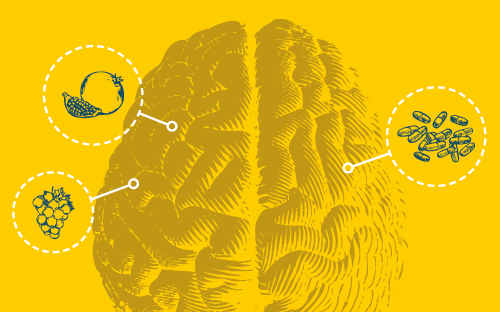Neurodegeneration and Parkinson’s disease
Recent studies report that: as many as one in two women and one in three men, are likely to develop a neurological condition such as dementia or Parkinson’s. In Parkinson’s disease, there is a loss of neurons involved in producing dopamine, a neurotransmitter substance. The loss of these cells increases over time. The cell deaths result in movement disorders such as; slowness, tremor, rigidity and instability. The full range of Parkinson’s symptoms is complex and doesn’t just include loss of movement. It can include other effects on things like sleep, the digestive system and cognitive issues, such as thinking difficulties or mild memory loss.
The ‘gold standard’ treatment for Parkinson’s is the same today as it was 60 years ago, using dopamine replacement therapies to improve symptoms. Such drugs focus on ‘topping up’ dopamine to help patient’s regain normal movement. Parkinson’s symptoms get worse with time and patients often require more medication at higher doses. This leads to increased side effects such as involuntary movements called ‘dyskinesia.’ Dyskinesia is the most common side effect of dopamine replacement therapies, and for people with severe dyskinesia everyday activities such as eating a meal or doing up buttons can become difficult.
Parkinson’s is what is known as a progressive disease because it gets worse with time. The number of cases in the world is increasing and added to that the cost of treating the disease is expensive, with an annual cost of around three billion pounds in the UK alone. These factors highlight the importance of research into altering the disease rather than simply addressing the symptoms.
As many as one in two women and one in three men, are likely to develop a neurological condition such as dementia or Parkinson’s.

Natural antioxidants as a potential disease modifying strategy
One area of research for neurodegenerative diseases like Parkinson’s, where neuron function is lost or damaged, is reducing oxidative stress. Oxidative stress is damage to cells, proteins and DNA caused by highly reactive molecules called free radicals. The human body uses antioxidants to defend itself against free radicals and therefore reduce oxidative stress, but the defences can be overwhelmed by too many free radicals. This is thought to play a role in the development and progression of Parkinson’s.
As it can take a long time to develop drugs from lab to clinic, there is a rise in interest in finding new ways to use antioxidant dietary supplements. One example is nutraceuticals. These are extracts from plants, which have generated particular interest as potential therapies against oxidative stress. Curcumin, is an antioxidant extract from the cooking spice turmeric. The antioxidant properties of curcumin, against free radicals, may provide a promising strategy to limit the degenerative process in Parkinson’s. This is supported by research showing that curcumin protects against damage to dopamine producing neurons in cellular and animal models of Parkinson’s. Curcumin can reduce cell death, as well as improve symptoms. A problem is finding effective ways to extract curcumin from turmeric, because at the moment extraction can result in degradation and low absorption into blood (low bioavailability), reducing its activity and making it unlikely to access the brain at suitable concentrations.

Natural antioxidants have limited ability to access the brain – how can this be overcome?
The blood brain barrier prevents harmful substances entering the brain, but it also means that 98% of potential therapies can’t get to the brain either. For curcumin and other nutraceutical antioxidants to be useful as therapies scientists need to find ways to make them chemically stable and increase bioavailability to ensure they get to the brain. Many methods can be used to try to increase passage across the blood brain barrier or bypass it, but each comes with benefits and limitations.
Using surgery to place antioxidants directly into the brain would bypass the blood brain barrier. Surgery is however invasive and there are risks both during and after the procedure.
Nasal delivery – delivery through the nose – is able to bypass the digestive system and the blood brain barrier. This will prevent degradation of the antioxidant and increase the levels delivered to the brain. It is less invasive than surgery. A problem is that it can only deliver very small lipid soluble molecules capable of passing from the nasal region into brain cerebrospinal fluid and many potential therapies are large and not lipid soluble.
The annual cost of treating Parkinson’s in the UK is around three billion pounds.

Changing the chemical structure of molecules has the potential to increase their biological actions, stability, and targeting. This is the most traditional approach but the process is time consuming and expensive. It involves trial and error and rigorous safety testing to find the correct modification that does not alter the bioactivity or cause harmful side effects.
Using nanocarriers, nanometre-sized particles which can surround molecules, is one method that we are researching that might allow natural antioxidants to access the brain. The nanoparticles are lipid soluble and small enough, so they could successfully use the nasal route into the brain. The chemicals inside the nanoparticle don’t need to be changed so they would remain effective in treating the disease.
Neurodegenerative conditions like Parkinson’s where the neuron activity is damaged pose one of the biggest health threats to society, and most current therapies focus solely on improving symptoms. Historically, there has been limited research into disease modifying treatments. Improving antioxidant therapy and its targeting is now a very real and exciting future prospect for the treatment of neurodegeneration.
Learning resource
We have created learning notes to assist students and educators to further investigate the topics covered in this article. You can download the learning resource here »


